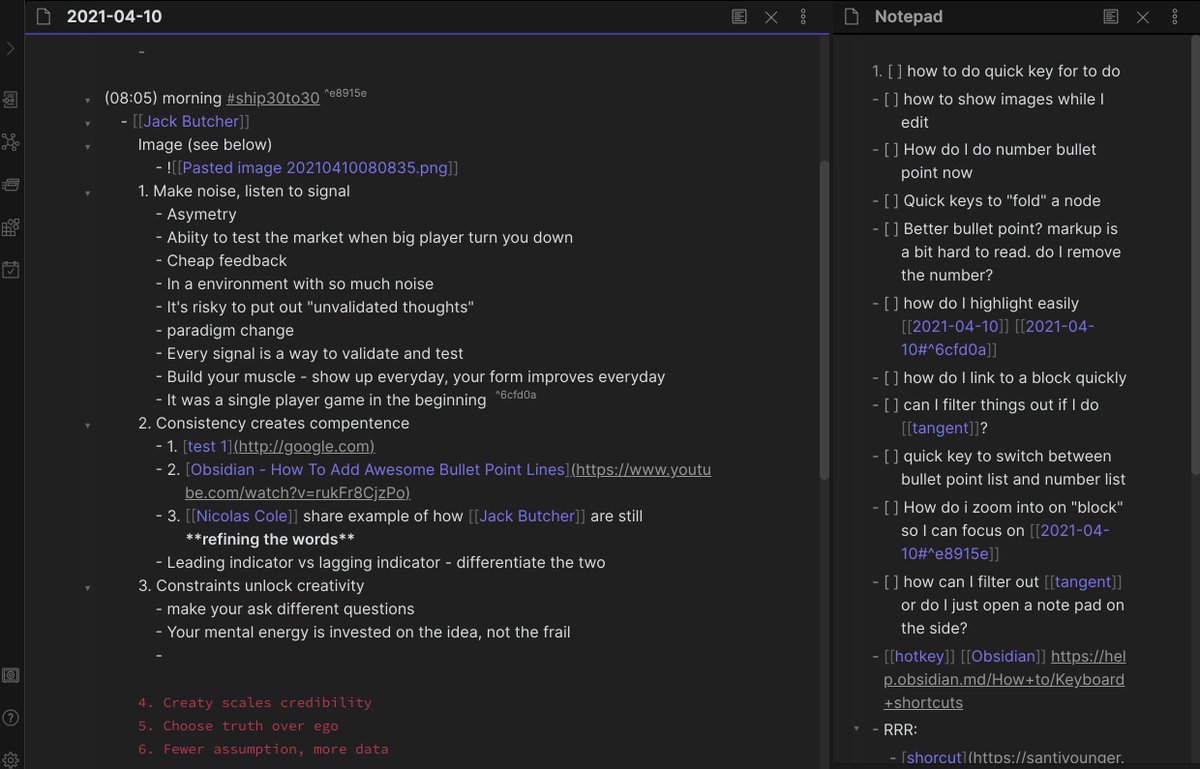
"Why would I pay for a course if I can find them for free?" This used to puzzle me.
(h/t) to @tferriss DiSSS rapid learning framework(deconstruct-selection-sequencing-stake) I think people underestimate the importance and time investment needed for Selection and Sequencing...👇
(h/t) to @tferriss DiSSS rapid learning framework(deconstruct-selection-sequencing-stake) I think people underestimate the importance and time investment needed for Selection and Sequencing...👇
https://twitter.com/fortelabs/status/1404604978140880897
1/ Selection - When I first learn something, everything feels like a signal and I don't have the mental scaffold to decide what to keep and what to toss.
Being guided through a structure course helps to focus on the 20% that yields 80% of the result.
Being guided through a structure course helps to focus on the 20% that yields 80% of the result.
2/ Sequence - I don't think learners pay enough attention to this; there are skills/knowledge that serve as foundational blocks where the right sequence enables
maximum output.
And as an amateur learner, I do not have this knowledge.
maximum output.
And as an amateur learner, I do not have this knowledge.
3/ Learning is expensive, self-learning even more so.
It requires time, attention and mental effort, which happens to be the most valuable currency for many modern-day workers.
I am not even going to bring up the idea of opportunity cost here.
It requires time, attention and mental effort, which happens to be the most valuable currency for many modern-day workers.
I am not even going to bring up the idea of opportunity cost here.
4/ To a person who values time, attention and mental effort, if there were a program that allows me to spend 20% effort/time for 80% of the result that solves my pain points…
If your time is valuable and highly leveraged, that's a deal that's hard to turn down.
If your time is valuable and highly leveraged, that's a deal that's hard to turn down.
5/ what I find interesting as I watch @fortelabs from the sideline is, conscious or not, this is a good strategy for premium courses.
This approach is attracting customers w/ specific pain pts whose time is highly leveraged.
They care about having a solution, not the price tag.
This approach is attracting customers w/ specific pain pts whose time is highly leveraged.
They care about having a solution, not the price tag.
This is a bit of a late-night brain dump as I continue to think about learning, leverage, business and technology.
If you find this interesting, feel free to bookmark or share. If you have ideas, I am all ears.
If you find this interesting, feel free to bookmark or share. If you have ideas, I am all ears.
https://twitter.com/JessicaShieh/status/1405087407456751616?s=20
• • •
Missing some Tweet in this thread? You can try to
force a refresh




